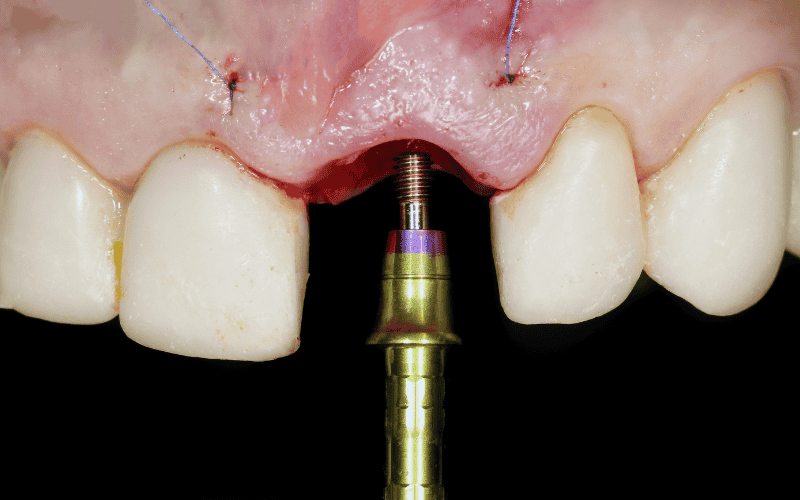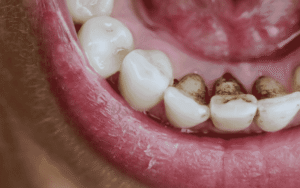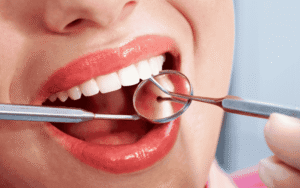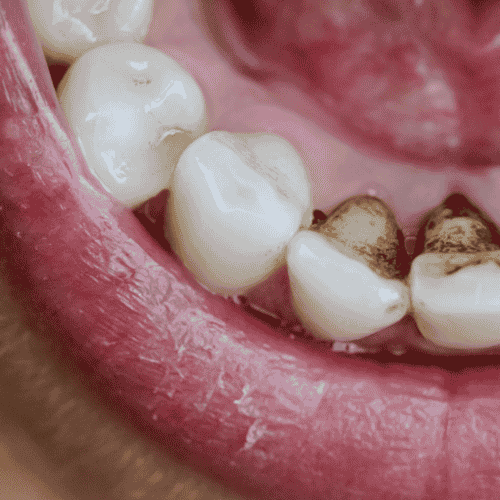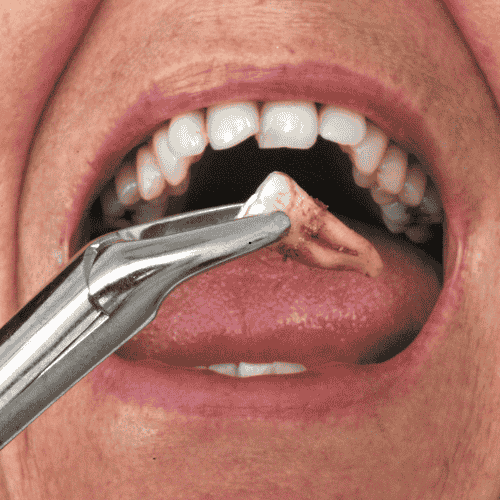An abutment is essential for dental implants to connect to the replacement. This small but important part keeps tooth implants and bridges in place and makes them look nice. If you want to replace missing teeth with dental implants or bridges, you should know about the base. Our professional team at Teeth Implants Turkey will help you pick the finest smile and oral health treatments.
Understanding the Role of an Abutment in Tooth Implants
Dental implants are a great way to fix your smile and replace teeth that are missing. There are three main parts to dental implants:
- The implant: Also called the post or artificial tooth root, it is surgically placed in the jawbone.
- The Abutment: The most important link between the implant and the prosthesis. It holds the repair in place and makes it comfortable and useful.
- Prosthesis: There is a part of the implant that you can see that works and looks like a natural tooth. This part is called the cap or bridge.
We’ll talk about the abutment dental today. It holds the prosthetic tooth to the implant post. The implant can’t hold up the dental restoration without this link. Let’s see how the abutment dental implants help maintain a stable smile.
Is a Dental Abutment the Same as an Implant?
Even though they are not the same thing, abutments dental implants and dental implants work together to add back lost teeth.
- Dental implants are small titanium posts or fake roots that are put into the jawbone through surgery. This holds up the new tooth. The implant will fuse with the bone after a few months. This makes the implant stay in place and makes your mouth stronger for eating and talking.
- The dental abutment connects the implant to the prosthesis, which could be a tooth crown, bridge, or denture. The abutment is attached to the implant after it has healed to keep the prosthetic tooth stable.
The implant is the base, and the implant abutment keeps the repair in place. Abutments hold dental bridges and detachable dentures firmly in place on implants.
Titanium is the most common abutment materia because it is strong and works well with the body. Zirconia can be used for visible abutment on implant areas because it matches the colour of teeth.
Different Types of Dental Abutments and Their Uses
Dental implants need abutments to link the implant to the prosthetic tooth. Various types of abutments are utilised for different stages of treatment, material preferences, and restoration kinds. Below are the main dental abutments and their uses:
- Healing Caps: Small, temporary healing abutment implant components protect the implant site and allow gum tissue to heal. They are used for a few weeks following dental implant procedure and aid recovery.
- Healing Abutments: After the implant and bone fuse, healing abutments, or “healing collars,” are implanted. As the body heals, healing abutments grow gum tissue around the implant, which makes it look better and work better. The healing abutment is taken out and a permanent one is inserted in after the muscle has healed.
- Temporary Abutments: Temporary fixes need abutments. These abutments allow the dentist to place a temporary crown or bridge while the actual one is constructed. Interim abutments provide flexibility and comfort until the repair is complete. Usually worn for weeks to months.
- Permanent Abutments: The final connectors made of titanium or zirconia, offering durability and long-term strength for full mouth implants, All-on-4, or All-on-6 procedures.
Abutments are needed during implant surgery to guarantee healing, comfort, and dental replacement efficacy. Based on your treatment stage and objectives, your dentist will propose an abutment. For abutments and dental implants, schedule a consultation.
Healing Abutments: Purpose and Process Explained
Healing abutments, often called healing collars or cuffs, are temporary implant healing abutment components. They ensure sufficient gum tissue development around the implant, creating a more natural and attractive gumline.
The healing abutment helps gum tissue develop around the dental implant in the jawbone. These higher abutments shape soft tissue better than healing caps.
Healing can take weeks or months depending on the dental implant procedure complexity. The healing abutment is replaced with a permanent one. This phase ensures the crown fits properly and allows you to wait to get the smile of your dreams.
Dental implants need healing abutments for functioning and natural look. Schedule a consultation immediately if you have implant questions or need help.
Temporary vs. Permanent Abutments: Key Differences
Dental implants need abutments to connect to restorations. Different abutments are used during treatment. A detailed comparison of temporary and permanent abutments follows:
| Temporary Abutments | Temporary Abutments |
|---|---|
| Used during implant healing. | Positioned after implant and tissue healing. |
| Supports a temporary crown or bridge for weeks to months | Final placement of crown, bridge, or denture |
| Stronger than healing abutments, temporary prosthesis holders | Individually made for each patient, assuring an exact repair fit. |
| Keeps space and promotes gum tissue development | Made of titanium or zirconia for durability and elegance. |
| Temporary fix until permanent abutment for dental implant | Long-term crown, bridge, and denture attachment |
| Shapes gum tissue while implant integrates | Supports a secure, practical, and natural-looking repair. |
Both are essential steps in understanding dental implant procedures for a stable, natural smile.
What Materials Are Dental Abutments Made From?
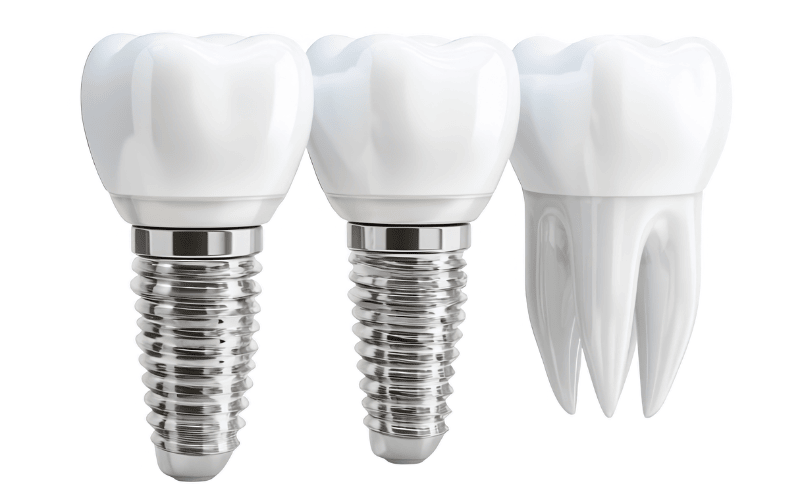
Abutments link the implant post to the restoration in dental implants. The strength, durability, and attractiveness of these abutments depend on their materials. Based on patient needs and implant function, implant dental abutments are created of different materials.
- Titanium: Titanium is often used as a tooth support because it is safe, strong, and doesn’t rust. It is a popular type of tooth implant because it works with bone and supports the repair.
- Zirconia: Beauty makes this tooth-colored porcelain attractive. Zirconia abutments match tooth colour better than metal ones.
- Stainless Steel: Strong and inexpensive stainless steel may be used for temporary abutments. Although seldom used for permanent repairs, it is a good recovery option.
- Gold Abutments: Sometimes used for metal-restored patients. It’s biocompatible and durable, although its yellow tint may not suit noticeable spots.
- Polyether Ether Ketone (PEEK): A novel dental abutment material. Biocompatible, non-metallic, and durable. When non-metal is desired, use PEEK.
The optimal material for your implant site, aesthetic preferences, and dental needs is determined by your dentist. Dental replacements are tailored and effective because each material is unique.
Step-by-Step: How a Dental Abutment Is Placed
Your prosthetic tooth requires a dental abutment to fit and function properly after dental implant placement. Steps to place a dental abutment after dental implant surgery:
Implant Exposure:
After osseointegration, the dental implant must be exposed. Under local anaesthesia, your dentist will numb the area and make a little gum incision to reach the implant. Minor surgery often includes this step.
Temporary Abutment Placement:
Uses temporary abutments to shape gum tissue as required. This abutment is needed to allow gum tissue to heal properly and have enough space for the final restoration. This period may take weeks or months, depending on recovery.
Permanent Abutment Placement:
After gum healing and tissue contouring, a permanent abutment is implanted. This abutment is custom-made to secure your crown, bridge, or denture to the implant post. Titanium or zirconia are used for permanent abutments.
Healing Time:
Dental gums require time to heal following permanent abutment insertion. Gums will completely shut around the abutment in 4–6 weeks. The dentist may recommend brushing and flossing after surgery to maintain oral health.
Final Prosthetic Attachment:
The implant abutment crown or bridge is attached. After gum healing and abutment placement, your dentist will attach a crown, bridge, or denture. This phase finishes the dental implant procedure with a functioning, natural-looking repair.
A dental abutment is essential to achieving a stable and attractive dental implant repair. Our experts will help you through the dental implant process to provide the greatest oral health results. Book a consultation now.
Does Getting a Dental Abutment Hurt?
Installing dental abutments is less painful and bothersome than putting in dental implants. Your dentist will show you the dental implant by making a small cut in your gums. It is possible for the abutment to be tightly attached to the implant.
Local anaesthesia numbs the area before surgery so you don’t feel any pain or discomfort. Most patients say that this method hurts a lot less than putting in an implant.
The treated area may be somewhat uncomfortable after the treatment, but this is usually transient and may be handled with over-the-counter painkillers. Swelling and pain usually go away after a few days.
Putting in a dental abutment is easy and painless with anaesthesia. If you have questions or need more information about the treatment, please call our staff.
Healing and Recovery After Dental Abutment Placement
A temporary healing abutment guides gum tissue after dental implant surgery. Known as a “healing cuff” or “healing cap,” it shapes the gum line around the implant during recovery.
After the implant integrates with the bone, the healing abutment is removed and a permanent one is implanted to maintain the repair. Different people recover differently, but it usually takes months.
Recovery Process:
- Post-Surgery Care: After the surgery, your dentist will give you tips on how to take care of yourself so that you heal quickly. Mild swelling or pain is common and usually goes away in a few days.
- Duration of Healing: It can take anywhere from weeks to months, depending on the person’s health and how well the implant works.
- Pain Management: You can take over-the-counter drugs to help with mild pain or discomfort after the surgery. Your dentist might tell you to use an antibiotic rinse to help you heal.
- What to Expect: Your gums may be a little irritated or sensitive, but not too much. If you have a lot of swelling or pain, call your dentist.
With good care and follow-up appointments, recovery should proceed well, and the final abutment will secure the restoration. All stages of healing guarantee long-term support and a natural look for your dental implant.
Please contact our staff with any recovery or post-surgery care enquiries.
What Teeth Can Support a Dental Abutment?
Selecting the proper teeth for a dental abutment is critical in dental implant and bridge procedures. Dental restoration success depends on tooth health and stability. You should know:
- Health of the Tooth: Ensure the abutment teeth are healthy. Treat cavities, decay, and extensive gum recession before using the tooth as an abutment. Although minimal movement is permissible, teeth should not be too mobile.
- Front Teeth (Incisors): Some dental bridges may be put on the front teeth (incisors), albeit this is less usual. These teeth must be healthy and strong to support the bridge.
- Molars: Molars are good for supporting dental abutments due to their strong roots and ability to bear chewing stresses. The molar’s numerous roots and robust bone make it ideal for this.
- Incisors: While not as frequent for abutments, incisors may also be utilised, especially when they have a single, robust root and sufficient bone support.
At Teeth Implants Turkey, we carefully evaluate chosen teeth for abutment tooth implant to provide a solid basis for your dental restoration. Contact us immediately to explore your treatment choices and customise it.
Benefits of Dental Implant Abutments for Long-Term Tooth Replacement
Long-term, stable tooth replacement requires dental implant abutments. These tiny but vital components link the dental implant’s titanium post to a crown or prosthetic tooth. Abutments restore grin functioning and beauty by providing a strong base. Here are some dental implant abutment advantages:
- Prosthetic Tooth Foundation: A stable foundation holds your crown, bridge, or denture. Chewing and speaking again need stability.
- Natural Look and Feel: Custom-fitted abutments smooth the implant-restoration connection, giving teeth a more natural look and feel.
- Dental implant abutments: are corrosion-resistant and long-lasting due to titanium or zirconia. This toughness keeps your repair operating and appealing for years.
- For Optimal performance: The abutment evenly distributes chewing forces throughout the implant, decreasing damage risk and ensuring long-term performance. This is essential for extensively eaten posterior teeth.
- Reduced Need for Maintenance: Unlike dentures or bridges, dental implant abutments need little maintenance and may last a lifetime with proper care. Regular dental appointments maintain the abutment and implant.
- Improved Oral Health: Dental implants and abutments prevent jaw bone loss from missing teeth. This may protect your gums and jawbone.
They’re vital in implant dentistry, ensuring your replaces tooth process lasts for years.
Cost Considerations and Affordability of Dental Abutments
The cost of dental abutments depends on material, location, and clinic. Titanium abutments are cheaper than zirconia or custom-made ones, which are more durable and attractive. Consult your dental insurance provider for insurance. Many clinics provide financing to make dental implants and abutments more affordable. Implants last longer and need less upkeep, despite their greater initial cost. Teeth Implants Turkey works with you to provide the finest treatment within your budget.
Contact our doctor Dr. for your initial consultation and take the first step to the smile of your dreams.
Frequently Asked Questions About Dental Abutments
Is it painful to have an abutment placed?
No, dental abutment installation is usually painless. Numbing the area with local anaesthesia ensures your comfort throughout the treatment. After surgery, over-the-counter pain medication may relieve slight discomfort and swelling.
Can the abutment and crown be placed during the same appointment?
Usually, the crown and abutment are implanted separately. To enable gum tissue to recover and integrate with the implant, the abutment is inserted first. Depending on the healing abutment, a temporary crown may be inserted until the final restoration is completed.
How long does the abutment placement procedure take?
Abutment placement takes 30–60 minutes. The procedure is short, but dental implants, including abutment and crown insertion, take months to heal and integrate into the bone.
Share this post to help others understand what is a dental abutment, what is abutment in dentistry, and how it ensures your implant abutment crown fits perfectly. Contact our doctor, Dr. [Name], to learn more about abutments dental, healing abutments, and achieving the smile of your dreams through implant dentistry.



